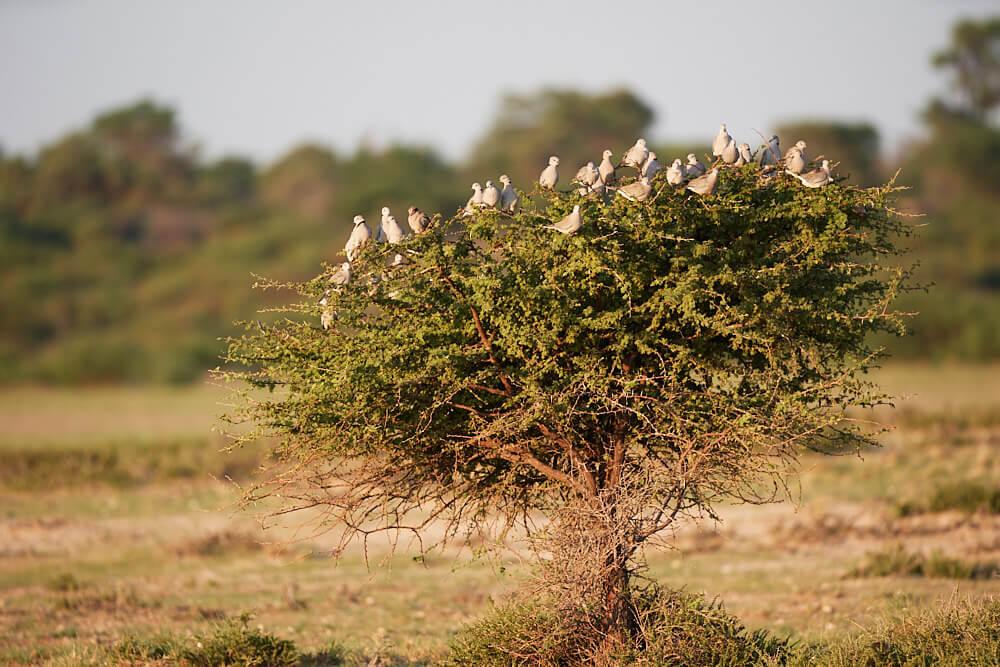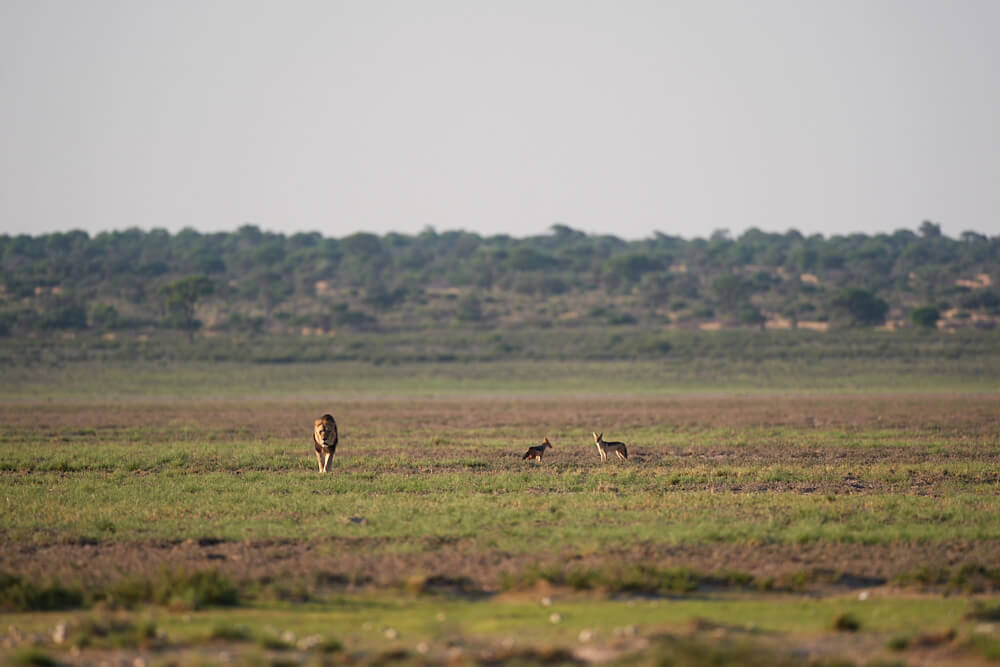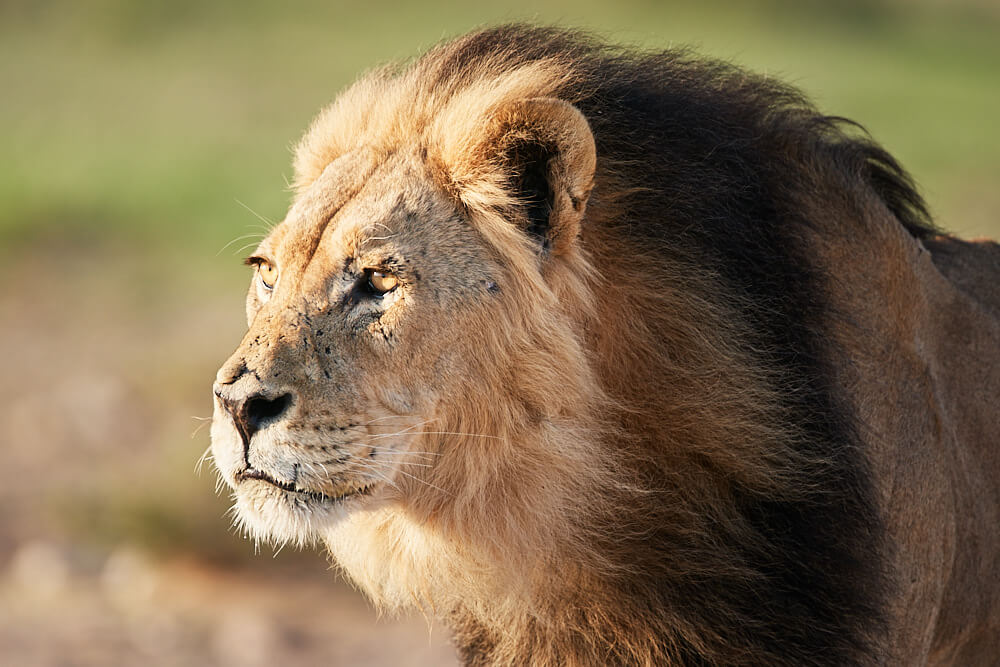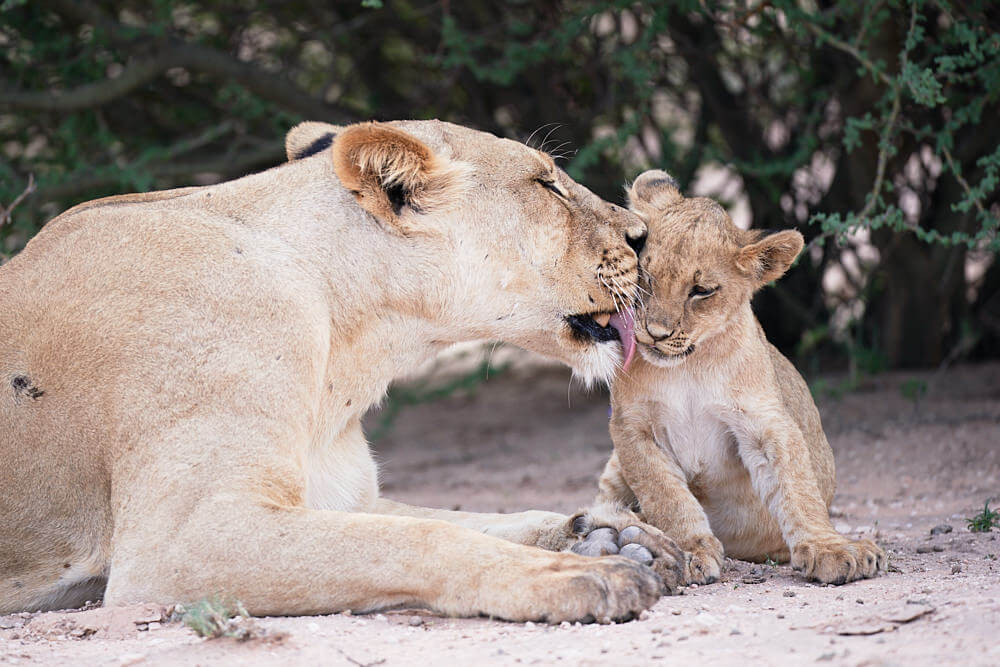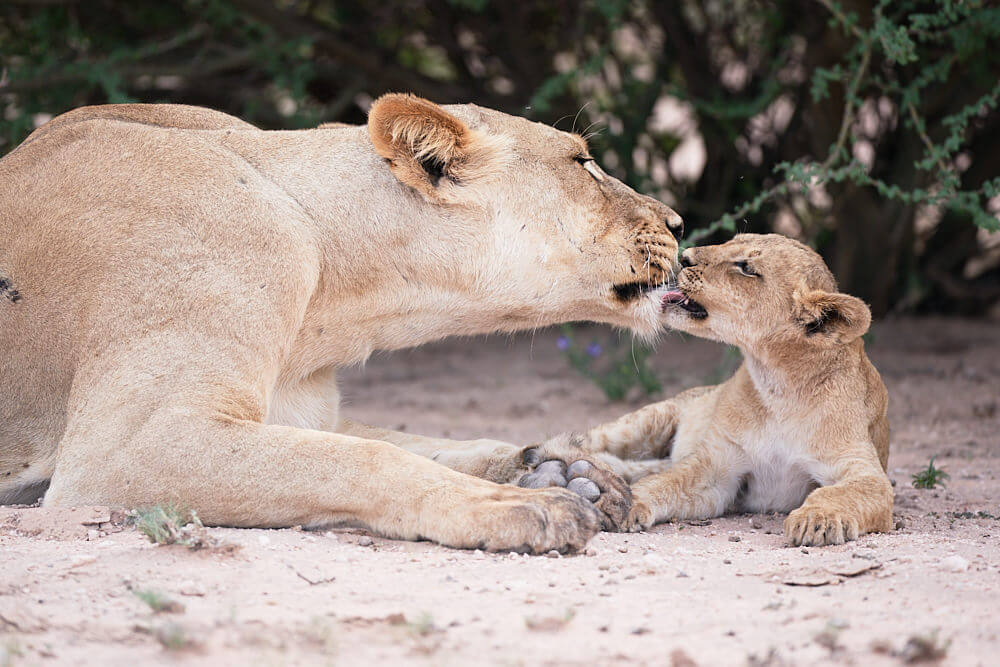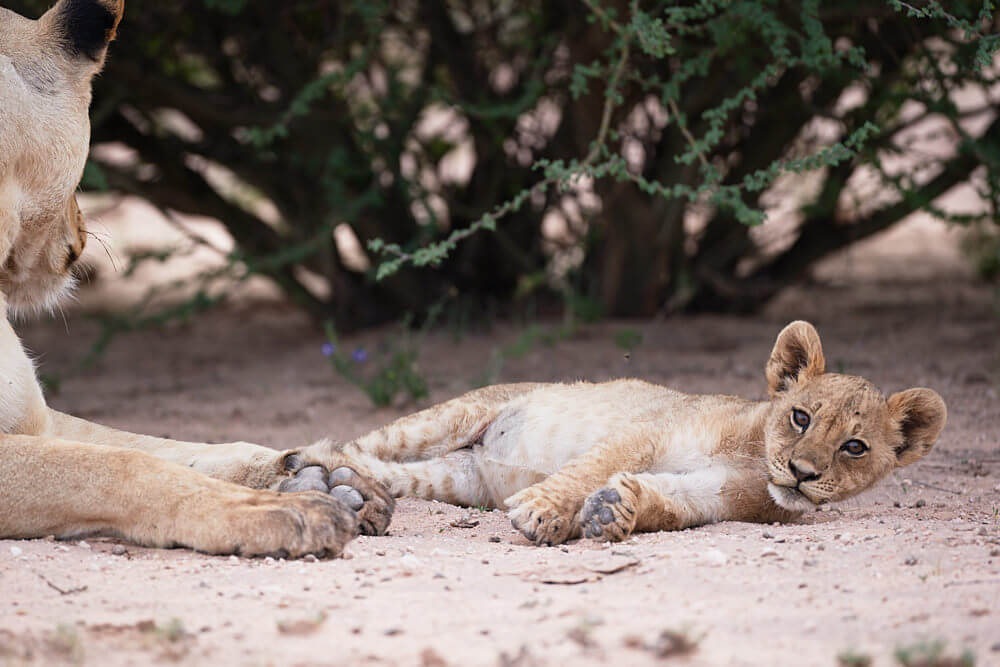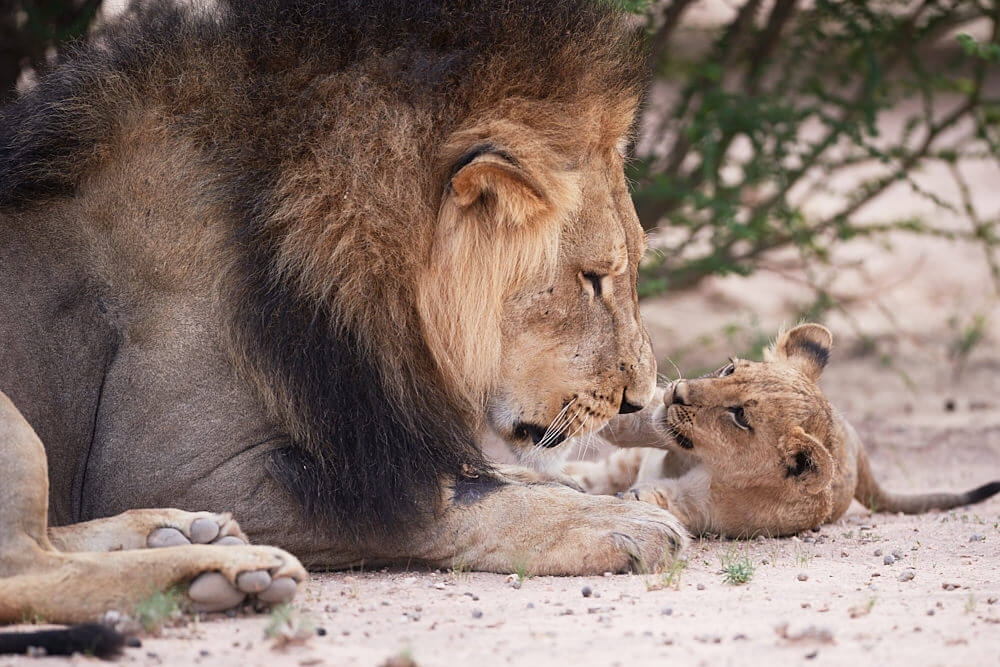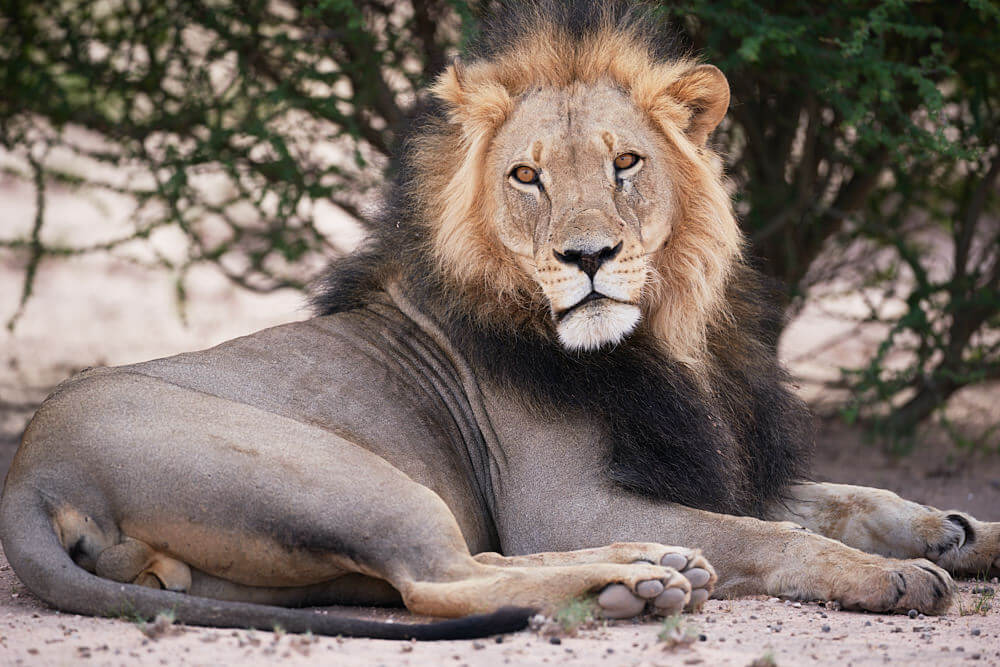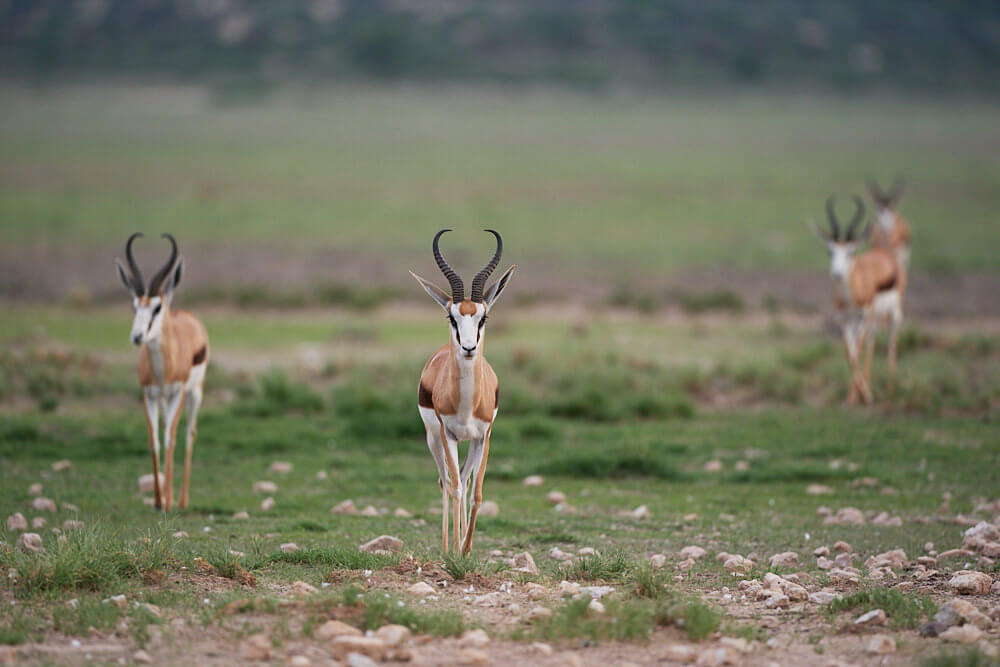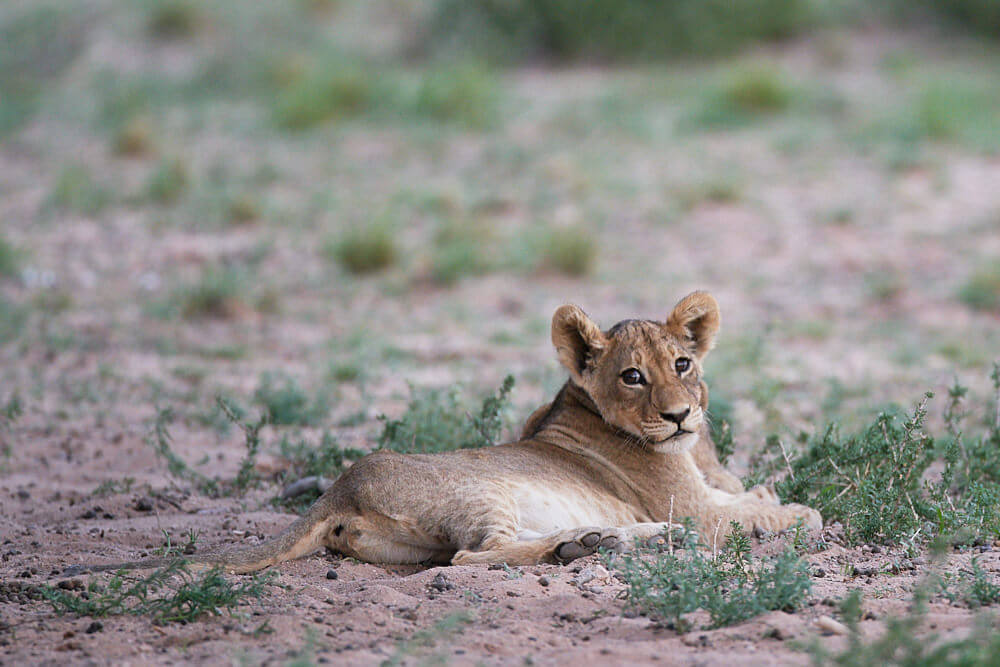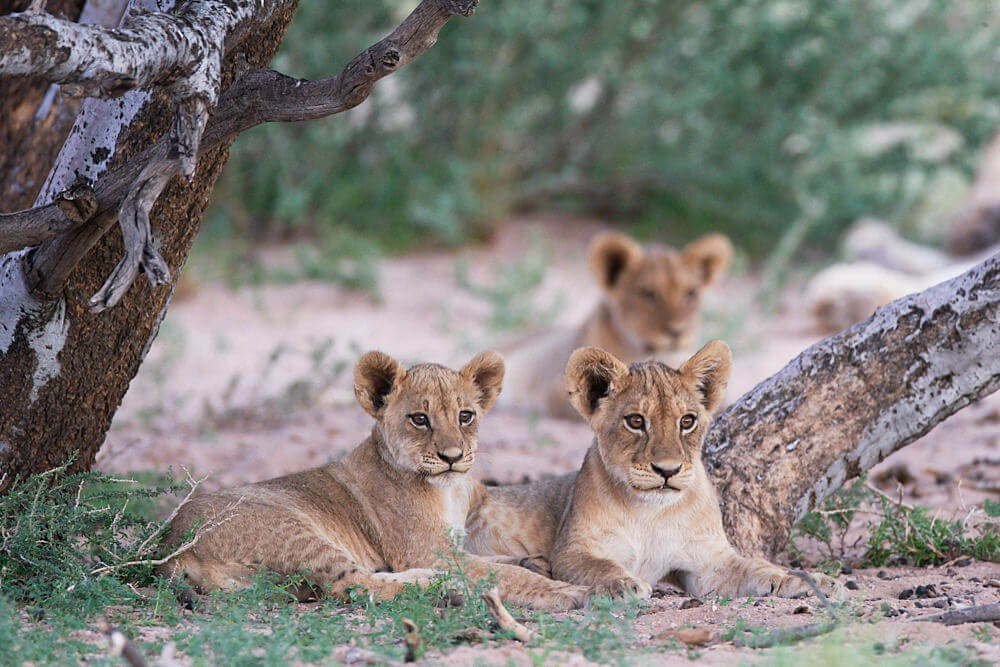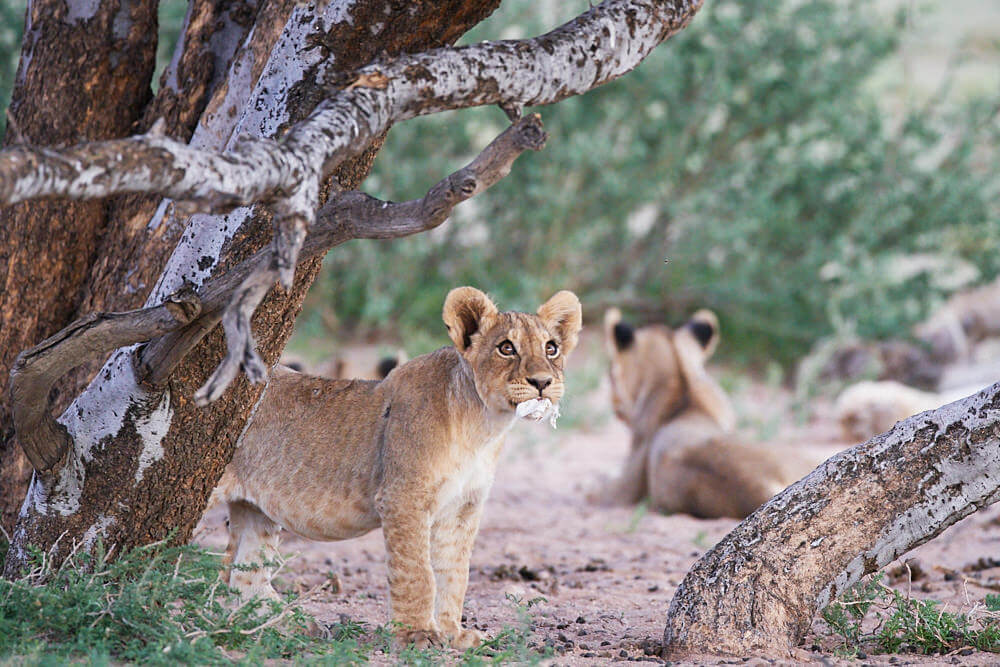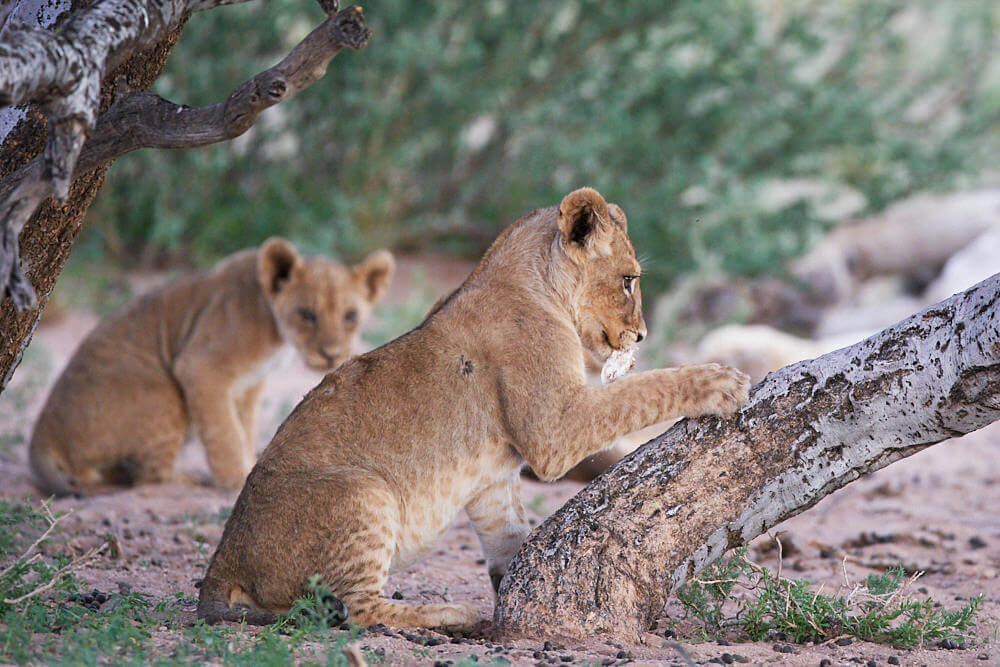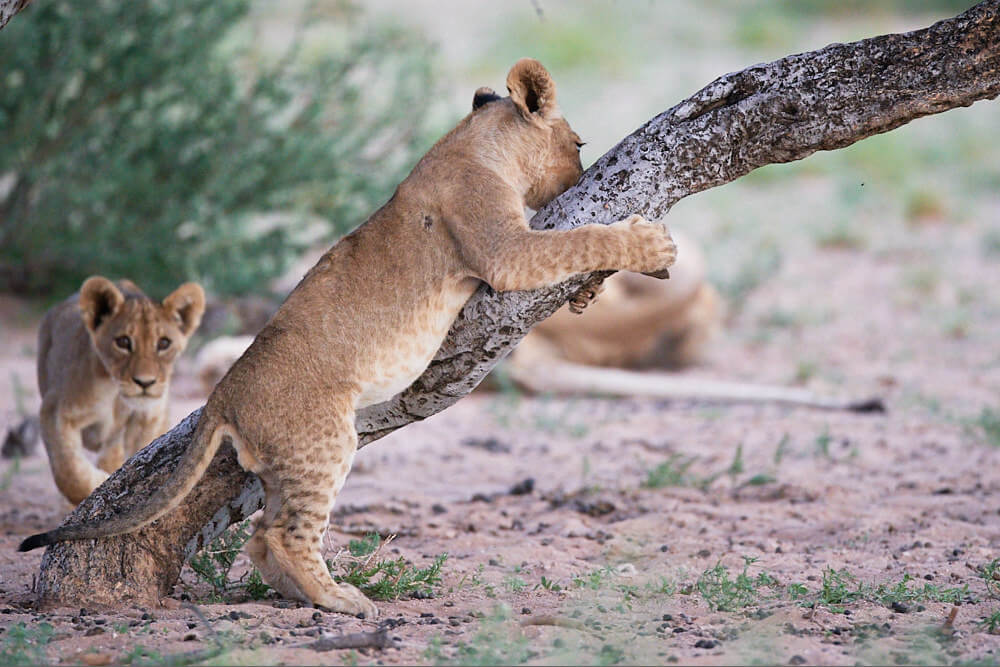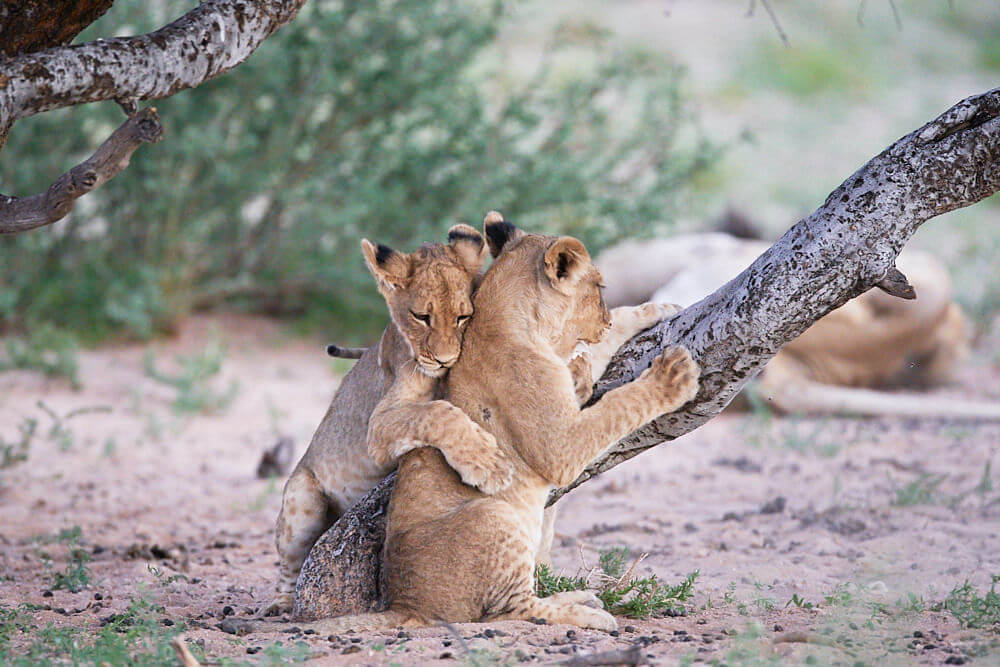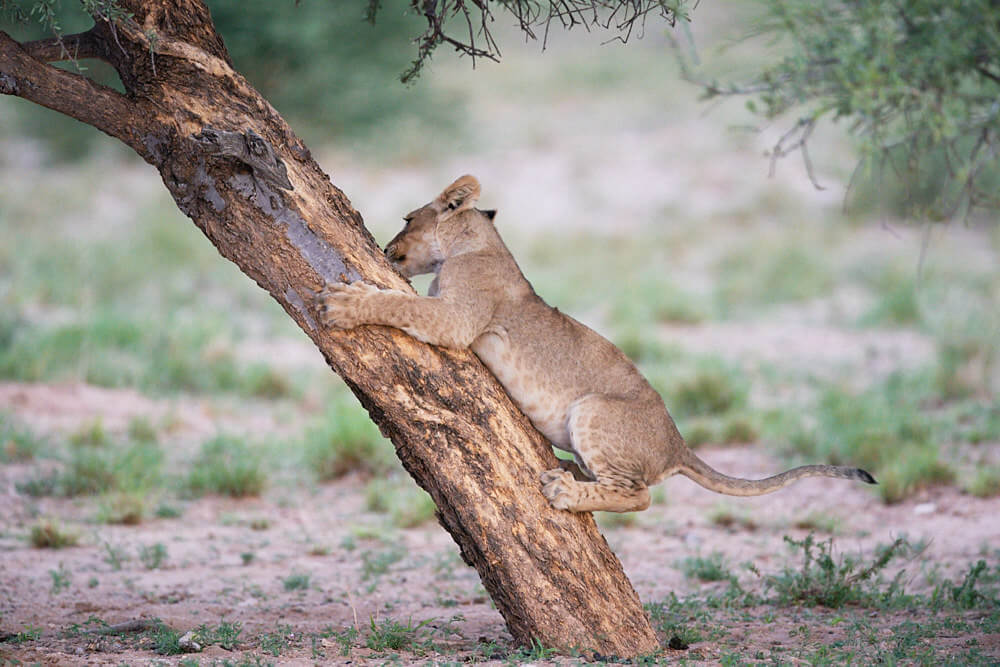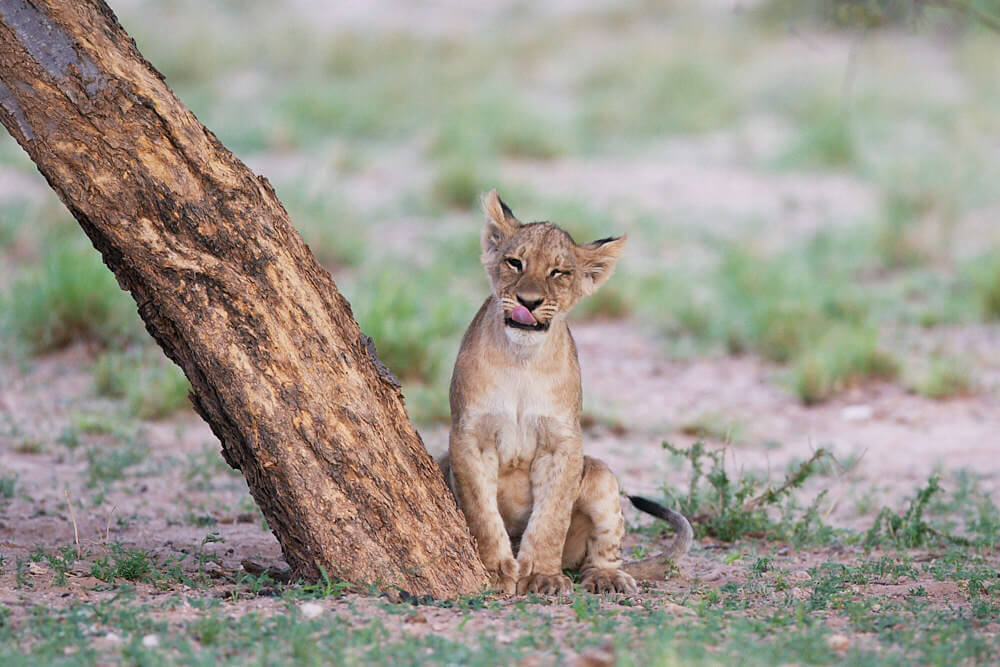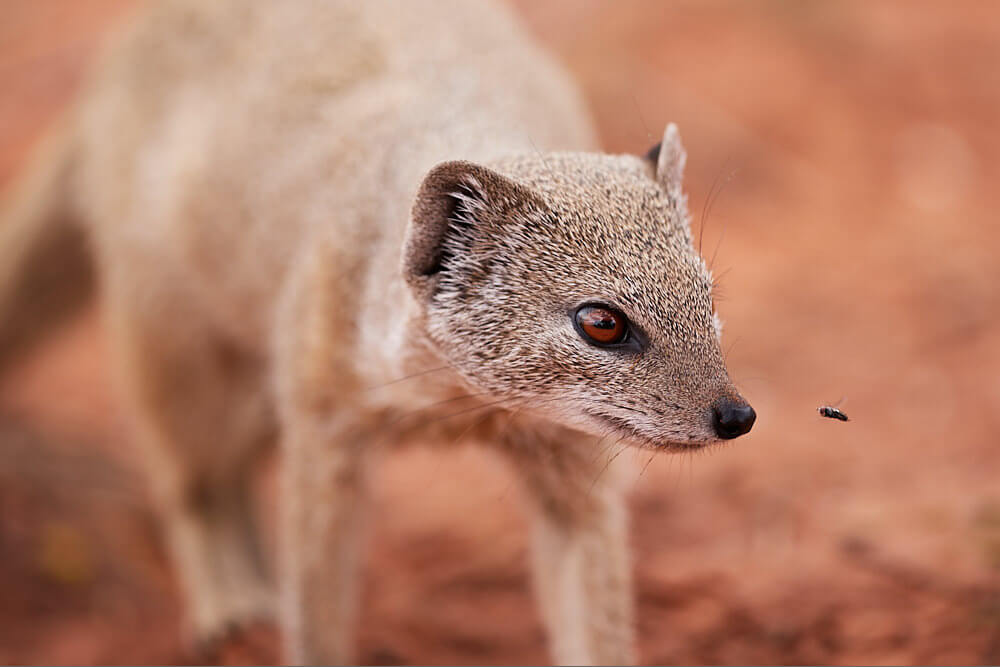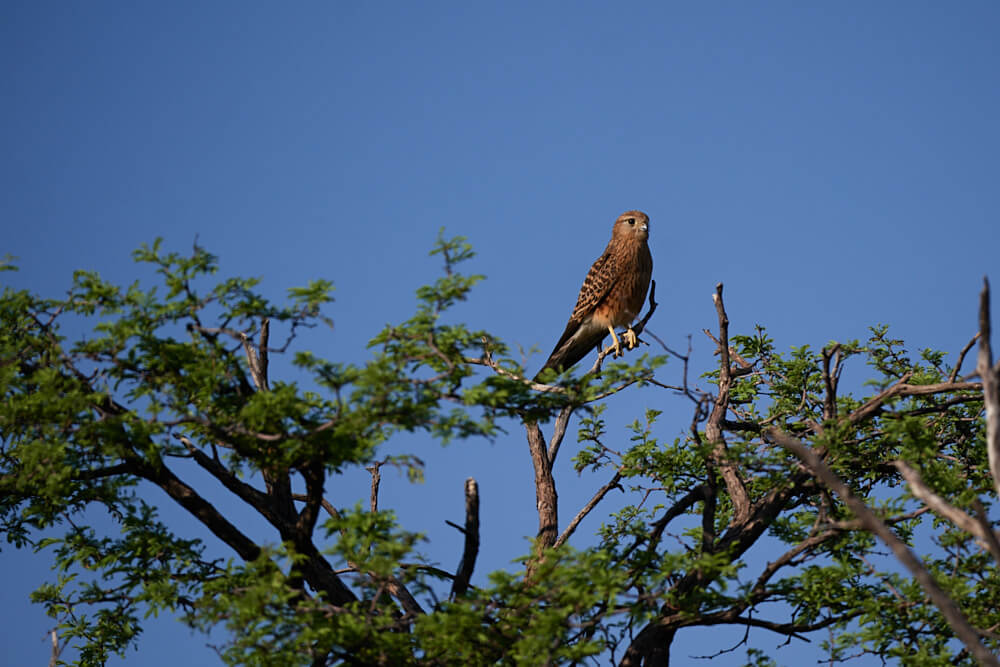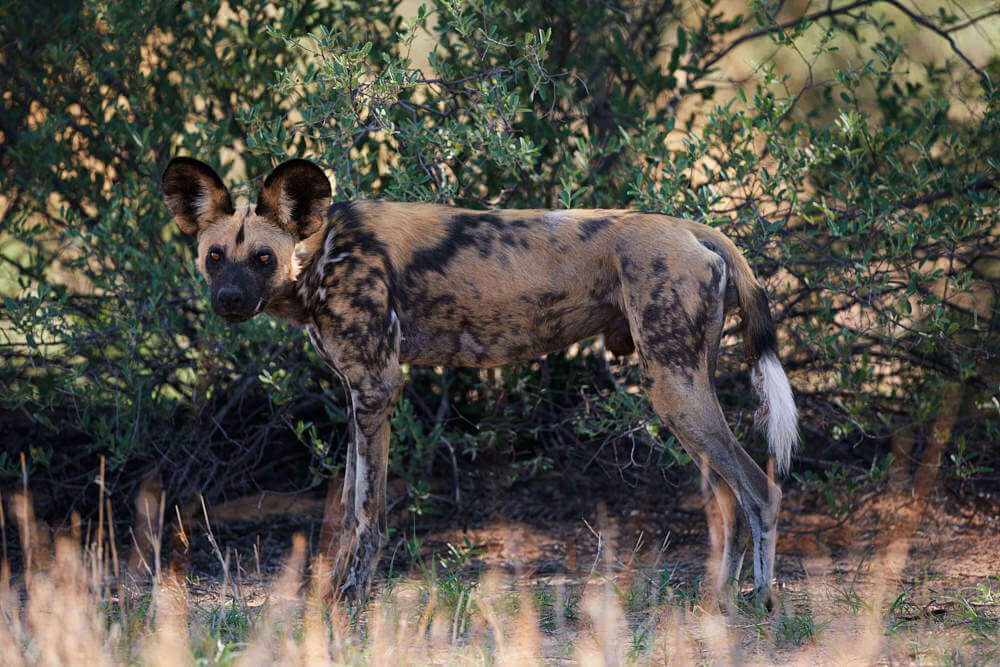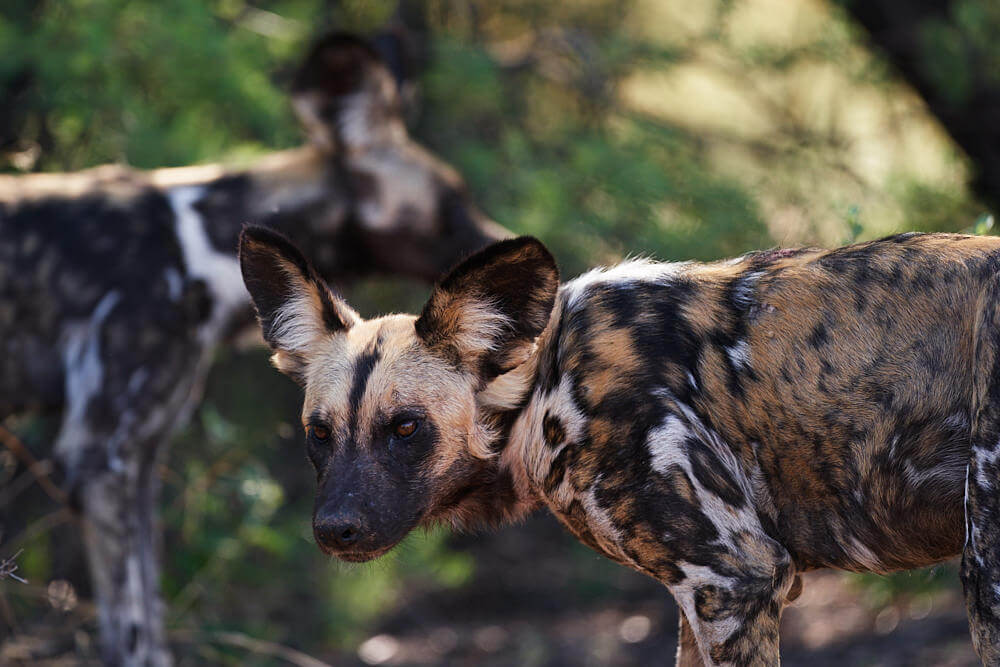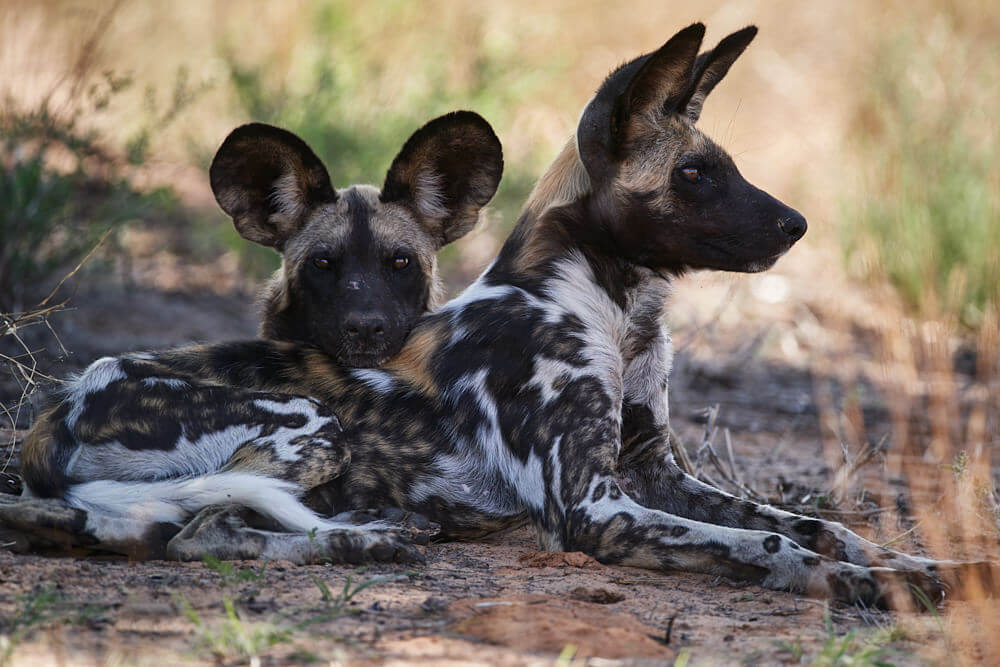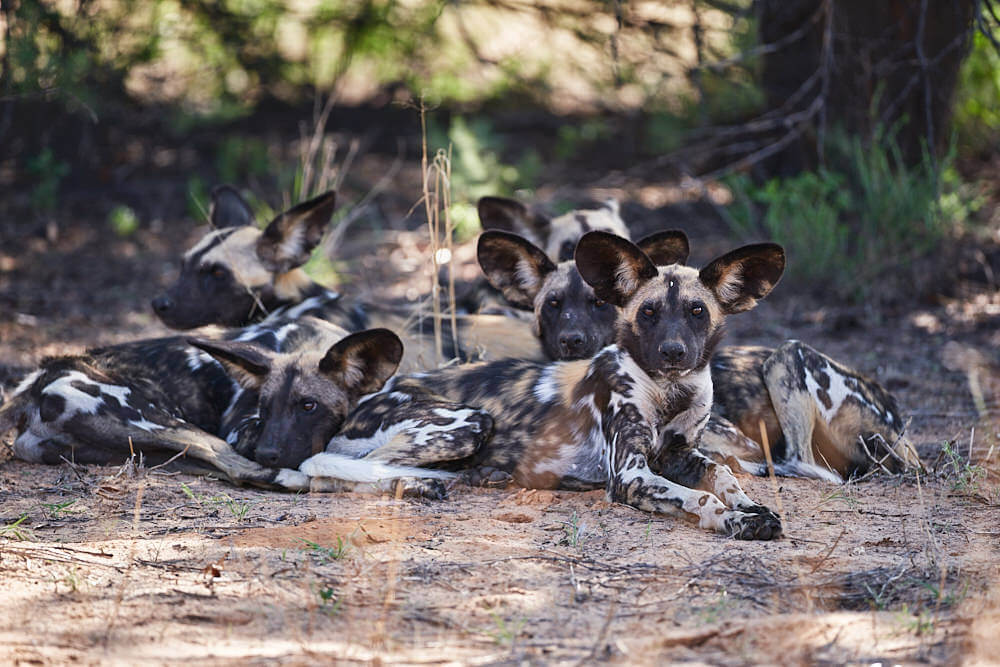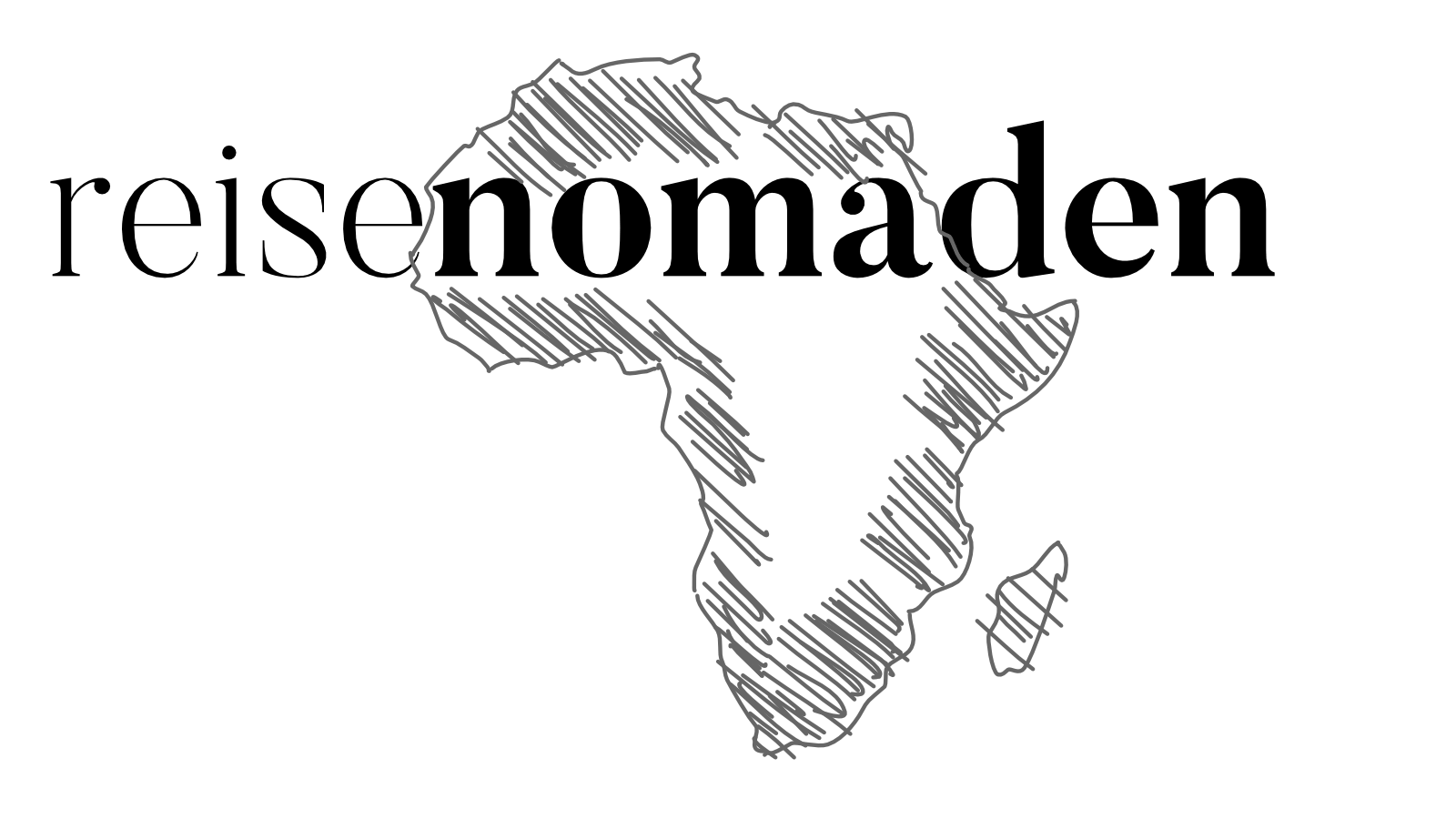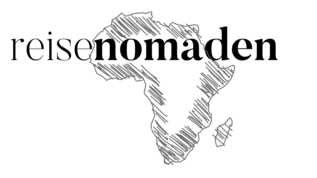The KTP is our last destination in Botswana
Our last destination in Botswana led us to the Kalahari again. More precisely to the Kgalagadi Transfrontier Park (short KTP). This park is an amalgamation of two parks from Botswana and South Africa with another access from Namibia.
The South African part is subject to very strict behavioral regulations and the camps are fenced. Mata Mata, Twee Rivieren, as well as Nossob accommodate 30+ people without problems. The neighbors are close, and it doesn’t really fit with our previous way of traveling. With a few exceptions, we couldn’t even hear the neighbor, as he camped at least several hundred meters away, usually even several kilometers. You can move freely in the park and cross the borders without official border crossing. You just have to leave the park in the country where you entered it.
Do we still book South African Camps in KTP?
We never felt we had to visit the South African areas of the KTP. Both beforehand in the planning phase and during our trip. In Mashatu, at our trails guide course, we met Otto. Otto is a South African participant and a very dear person. He was very often in the KTP with his father and raved about Nossob and Mata Mata. What also put us off at the time was the hullabaloo that is made about booking. Many people try to book their few days stay already 1.5 years in advance. In fact some dates always become free again at short notice. SanParks, the responsible operator of the South African camps, offers an online tool for reservations, or even booking.
On our drive from Ghanzi to our first destination, the Kaa region, we discussed whether we should not spontaneously try to book a campsite in Nossob or Mata Mata for 4 – 5 days. We then could leave the KTP via Twee Riveren to South Africa. We decided that we wanted to have a look at the bookings at our refueling stop in Hukuntsi.
The booking disaster
Guido stayed in the car and did the research while Sonja bought a few small things in the local store. In fact, exactly following our Botswana bookings, there were still two nights available in Nossob and then three nights in Mata Mata. Guido wanted to book these nights. When forwarded for payment, he was sent an SMS with an additional code – for security reasons. Unfortunately, it never arrived because the Swiss Sim Card is at home. A click on ‘cancel’ caused an error on the website. The reservation was still active, but it was no longer accessible.
At the same time a new reservation was no longer possible because the campsites were no longer shown as available. They were blocked by our imaginary reservation. There was a landline number and a given mobile number of San Parks. The landline number was not working and the mobile number went to voicemail. After the 10th attempt – Sonja did not want to give up – Guido just said: “Honey, this is not going well. Everything we tackle that is ‘right’ runs smoothly and just works, doesn’t it?”
“Yes, but if we had taken my card, the text message would have arrived, and it would have worked.” “We forget about it, ok?” In the end, Sonja didn’t give up and Guido promised her a compromise. “At Kaa Gate, we’ll talk to the Botswana rangers and see if they can do something for us.” After our check-in – we stayed three nights in this part of the park – we gave all the details to the ranger, and he agreed to call Two Rivers, the main camp (“Twee Riveren” on the Botswana side) and see what he could do for us.
Is there water around in this area of KTP?
We went to the sparely visited part of the KTP and our destination was the Swart Pan. This a large pan in a distance of approximately 70 km from the gate. This year everything was different – in the Kaa region it rained for the last time in December and nature was dry. The artificial waterhole at the Pan was unfortunately dried up because the water pipes of the borehole were broken. There was no water in the whole region. The landscape was beautiful, but the animals were missing. In four days we encountered sporadically Oryx antelopes and Bat-eared foxes. We heard a lion roaring for two times – unfortunately we have not seen him.
Back at the gate, we learned that there was always available space in Nossob somehow. His attempts to call there failed, and therefore he could not get a confirmation. He advised us to just drive there. For us that was unsatisfactory. We wanted to take the strain of the 160 km partly strong deep sand only on us, if we could explore also the area around Mata Mata. After Leaving the Kaa Gate, we drove to the second gate on the Botswana side – the Mabuasehube Gate – and one last time Guido tried his luck.
Do we go to the south African side?
The ranger was very nice and called Nossob in Guido’s presence. A gentleman answered and when she passed the phone to Guido, the call changed into a monologue. The gentleman on the other end of the line would not even answer his “good morning” and hung up. A second call attempt went unanswered and after about twenty rings, Guido waved it off and told Sonja that the Nossob/Mata Mata project was dead. The signs were clear from the beginning, and it didn’t change – everything was ok.
Our next Adventure could start
Five very emotional days were ahead. Our first campsite, which we booked for three nights, was secluded on a plateau with 180° view of the Mabuasehube Pan. The first evening we were enjoying a campfire with a ‘panoramic view’. All of a sudden it started to wind strongly and thunderstorms were brewing distantly. The wind was warm, despite the advanced hour, and so we stayed seated and enjoyed the spectacle. When the starry sky became visible and the Milky Way appeared, we couldn’t help ourselves and had to try our photographic luck. We were lucky enough to capture a lightning together with the milky way.
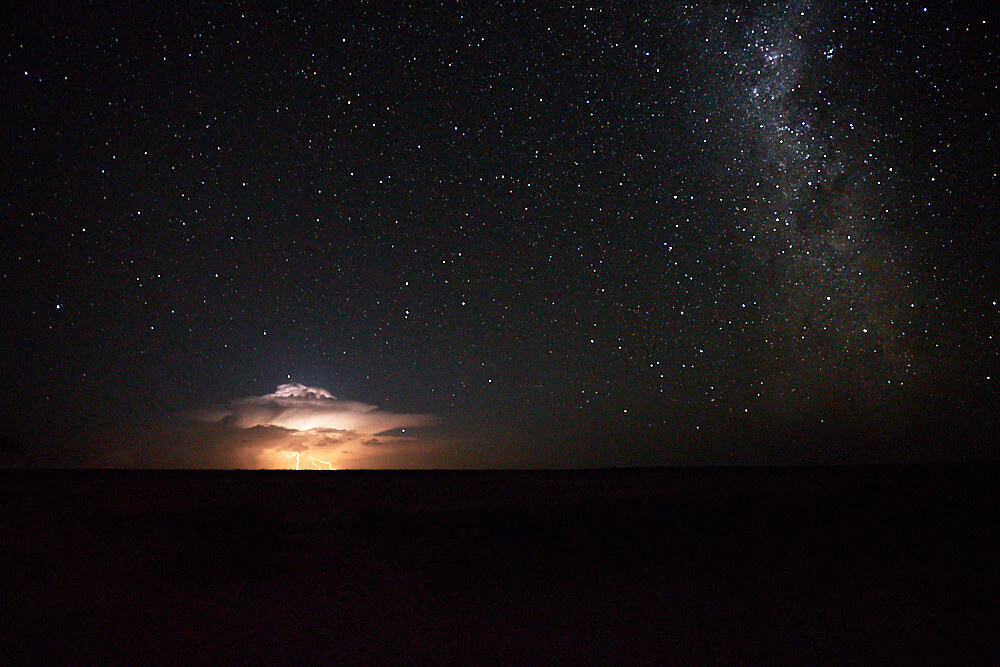
Die Mpayathutlwa Pan
On the first day we explored five of the surrounding pans of this region. In this part of the park there wasn’t much rain either but all but one of the waterholes were filled. Springbok, hartebeest and wildebeest were everywhere in large numbers. Unfortunately we couldn’t find any predators. On the second day we visited Mpayathutlwa Pan in the early morning and were lucky. On the opposite side of the pan we spotted a handsome lion preparing to cross the pan at a leisurely pace. We could accompany him for a while and photograph him in the best morning light, until he settled down under a bush to sleep for a while.
Turn one into ten
The next morning we returned and met a pack of ten at the spot where the lion had settled the day before. It was a coalition of two male lions and three lionesses with a total of five cubs. While seven of them were already lying under a tree and sleeping, we had the pleasure of watching a lioness cuddling with a cub. The cub then moved on to his father, who also had to exchange a few caresses before these three then also made themselves comfortable and slumbered off into the realm of dreams.
We drove back to our camp, enjoyed the day in the shade and then returned in the late afternoon. The probability that lions that sleep somewhere in the morning are still there in the afternoon is extremely high. We were not surprised to find the entire pride in an almost unchanged location. We were allowed to watch the cubs playing and had a lot of fun.
Has there been a takeover?
In the evening we drove happily back to our plateau campsite and were looking forward to moving to the Mpayathutlwa Pan the next morning. The next morning we heard that there had been a big fight in the pan during the night. Two foreign lions had challenged the two dominant lions of the pride and wanted to take over the pride. When such an action succeeds, it has serious consequences. The new dominant lions immediately kill all the cubs. The lionesses then become ready to conceive again, and they can pass on their genes.
Several shivers went down our spines. Those cute little lion cubs we enjoyed watching playing the day before could possibly already be dead? That mighty lion from the morning should have been defeated? It can’t be what can’t be and that day everything changed and the ease of driving around gave way to fear. Of course, we looked at it from a human perspective and the possible cruelty that nature can also show, weighed on our minds.
It didn’t get any better when no one – all the surrounding campers were looking for the pack – managed to track it down and get some sure knowledge. It didn’t help, but we had to go to sleep with that feeling. Later in the evening we heard two lions roaring. Even this did not bring any insights because both, the previous top dogs were two of them and the challengers.
Tracks of the cubs
It’s crazy but during the night we couldn’t enjoy the sound. In the morning we got up so early that we were ready to leave already at 05:15 a.m. We drove to the water hole, and then we saw fresh lion tracks. We examined the tracks closely, noted the size and came to the conclusion that the cubs were alive as there were clearly their tracks as well. This was good news – but in the end it only meant that there were survivors.
Then, elsewhere, we discovered more tracks and this abundance made us conclude that the old ones were also the new rulers because there was no sign of hustle and bustle in these tracks. This touched us deeply and we were happy. It is of course naive, but the time spent with the little ones was enough for us to stop being impartial observers. Therefore, it touched us very much and for us, it was then not so dramatic that we actually did not find the pack until our departure. In the evening before our departure we heard the two lions roaring in the immediate vicinity of our tent on the road. Powerful and penetrating the whole body, their roar reached us, and we stopped for a while and devoted all our attention to them.
Painted Dogs on our way to South Africa
The next morning we were allowed – after a total of 19 nights at different places in the Kalahari – by chance and completely unprepared to see a brown hyena, as it strolled comfortably from the waterhole over the pan. After crossing the gate but still in the park area, we came across a group of wild dogs (or painted dogs) completely unexpectedly. The most successful hunters in the African bush (they kill 85-90% of the chosen prey) are fascinating animals with an incredible social structure, and we are happy every time we are lucky enough to see them. Botswana still provided us with great experiences before we left the country and crossed the border into South Africa!
